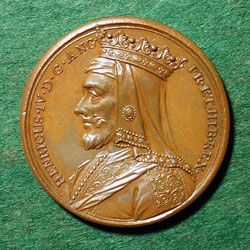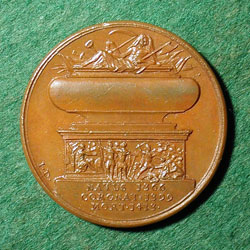

|
HENRY IV |
|
|
Henry IV (Henry Bolingbroke) (1367-1413), King of England (1399-1413), the son of John of Gaunt, was born in Bolingbroke Castle, Lincolnshire, the first of three 15th -century monarchs from the House of Lancaster, by his first wife, Blanche. As Henry Bollingbroke he was exiled in 1399 by Richard II, thus being deprived of the vast Lancastrian estates left to him by his father. He returned and overthrew Richard, claiming both the estates and the crown for himself. As a usurper, Henry was in a weak position and was forced to make concessions to the church, parliament and the nobility. Nevertheless, he successfully consolidated his power in the face of repeated uprisings of powerful nobles. Sir Henry Percy, called Hotspur, staged a brief uprising which ended when the Kingís forces killed the rebel in battle near Shrewsbury, Shropshire in 1403. In 1405 Henry had Thomas Mowbray, Duke of Norfolk and Richard Scrope, Archbishop of York, executed for conspiring with Northumberland to raise another rebellion. Henry made an alliance with the French faction that was waging war against his sonís Burgundian friends. As a consequence, tension between Henry and his son, the Prince, was high. At his death, Henry was succeeded by his son, who took the title of Henry V. (taken, in part, from Thompson) |
|